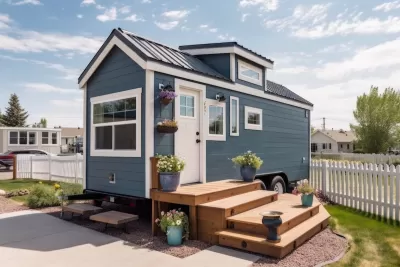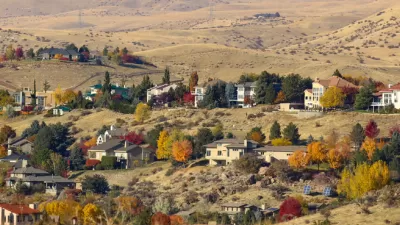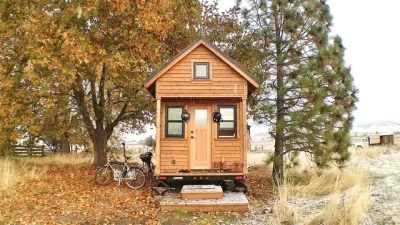Tiny homes were one of the hot button topics of the previous decade. In 2023? Not so much.

An article by Eve Andrews for Grist critiques the tiny homes movement—an idea that seems to have come and gone in the public consciousness, not to mention the newsfeeds of planning publications.
What once seemed like a revolution in housing and culture—born from a crisis of housing affordability and the ravages of the Great Recession—now seems like an “Instagram aesthetic,” according to Andrews.
But for all the hubbub, tiny houses never really entered the mainstream realm of homeownership. Instead, they entered the province of tourists seeking a brief decampment to a smaller-scale, climate-friendly lifestyle. You’re more likely to encounter one while scrolling through $300-a-night Airbnb listings than browsing Zillow.
Still, Andrews is unwilling to call the tiny homes movement a failure, rather it’s more of a victim of unrealistic expectations: “[T]he expectations placed upon it were too high: that it could take on all the sins of a bloated, profit-driven housing industry, and deliver us as a nation to a humbler, happier way of living,” writes Andrews.
The source article, linked below, includes a while history of the tiny homes movement, including the highs provided by the debut of a Netflix home improvement show in 2014, Tiny House Nation, to the lows of the Airbnb-ification of the movement.
Andrews also sees some reason for optimism that the ideas that birthed the tiny homes movement still have a chance at wider adoption, including in the resources tiny homes provide people experiencing homelessness and as a popular new typology of housing, the accessory dwelling unit.
FULL STORY: Did big expectations doom the tiny house movement?

Planetizen Federal Action Tracker
A weekly monitor of how Trump’s orders and actions are impacting planners and planning in America.

Maui's Vacation Rental Debate Turns Ugly
Verbal attacks, misinformation campaigns and fistfights plague a high-stakes debate to convert thousands of vacation rentals into long-term housing.

San Francisco Suspends Traffic Calming Amidst Record Deaths
Citing “a challenging fiscal landscape,” the city will cease the program on the heels of 42 traffic deaths, including 24 pedestrians.

Defunct Pittsburgh Power Plant to Become Residential Tower
A decommissioned steam heat plant will be redeveloped into almost 100 affordable housing units.

Trump Prompts Restructuring of Transportation Research Board in “Unprecedented Overreach”
The TRB has eliminated more than half of its committees including those focused on climate, equity, and cities.

Amtrak Rolls Out New Orleans to Alabama “Mardi Gras” Train
The new service will operate morning and evening departures between Mobile and New Orleans.
Urban Design for Planners 1: Software Tools
This six-course series explores essential urban design concepts using open source software and equips planners with the tools they need to participate fully in the urban design process.
Planning for Universal Design
Learn the tools for implementing Universal Design in planning regulations.
Heyer Gruel & Associates PA
JM Goldson LLC
Custer County Colorado
City of Camden Redevelopment Agency
City of Astoria
Transportation Research & Education Center (TREC) at Portland State University
Jefferson Parish Government
Camden Redevelopment Agency
City of Claremont




























